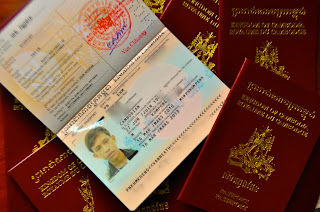One of the great benefits of being part of the Football for Hope Festival 2010 is the access to the World Cup sponsors. The World Cup is sponsored by adidas, Sony and Coca-Cola, among others. adidas will outfit each delegation with uniforms and other gear upon arrival in South Africa, which is a huge bonus for each team. Sony is sponoring a photo competition among participating delegation (32 groups representing 50 countries) which includes a donation of two cameras, a laptop, a GPS and a photo printer plus a trainer to teach the team how to use the equipment.
As stated previously, the majority of the team lives in villages with no electricity and certainly no laptops or wifi are in use by the local residents, in the schools or by local government officials. Thus, the kids were being introdued to totally foreign technology with no frame of reference for much of the typical training jargon and procedures.
The Singaporean trainer, Casey Teo, was enthusiastic about the task at hand while bringing a sense of excitement about the subject matter. As he doesn't speak Khmer, one of the coaches had to translate the entire training and it can be hard to translate technical terms, especially if you don't really understand the terminology yourself! In a classroom setting, the team was introduced to the basic functions of a digital camera, simple photos and care of the camera. Their eyes were huge as they passed around the cameras and they couldn't containt their giggles once they were allowed to snap away.
The idea behind the contest is for each team member to take the camera home to document their life, family, friends, hobbies, etc. The kids love taking pictures and love getting their photos taken even more. All youth in Cambodia give a reverse peace sign, often with their arms crossed, for all photos and these kids followed this time honored tradition.
The first day of training was informative and well received. The day ended with a field trip to a local Pagoda to practice the newly learned skills. Cambodia offers so many great opportunities for unique and beautiful pictures and this outing didn't disappoint. The group of teens toting cameras piqued the curiosity of the local kids playing near the Pagoda. Soon the team had a merry band of half-naked kids mugging for the camera, trying not to be outdone by the local cows roaming the sacred area or the coverful Buddhist temple as subjects for the budding photographers.
The introduction of the laptop, the internet and a camera GPS was when the cultural gap began to rear its ugly head. The trainer started off talking about the battery life of the laptop and how it must be plugged in to recharge the battery. Although we had told him about the lack of electricity in most of the team's homes, he didn't seem to grasp that reality. Continuing on, he tried to explain how the GPS could show where the photos were taken on google earth. He pulled up google earth on the laptop to show the team a map of the area and how the photos would be pinpointed on the map. Of course, they had never seen the internet, nor a map of the area and they defintely couldn't come close to understanding the concept of the GPS (satellites, trajectory and longitude/latitude). Our translater, an educated but rural Cambodian, was pretty lost on trying to explain the GPS in Khmer as he didn't understand it himself. As the confusion started to mount, we cut the session short to do a quick recap on the cameras and photography before the cameras were taken to the villages to document a day in the life.
Results from the team soon to come...






